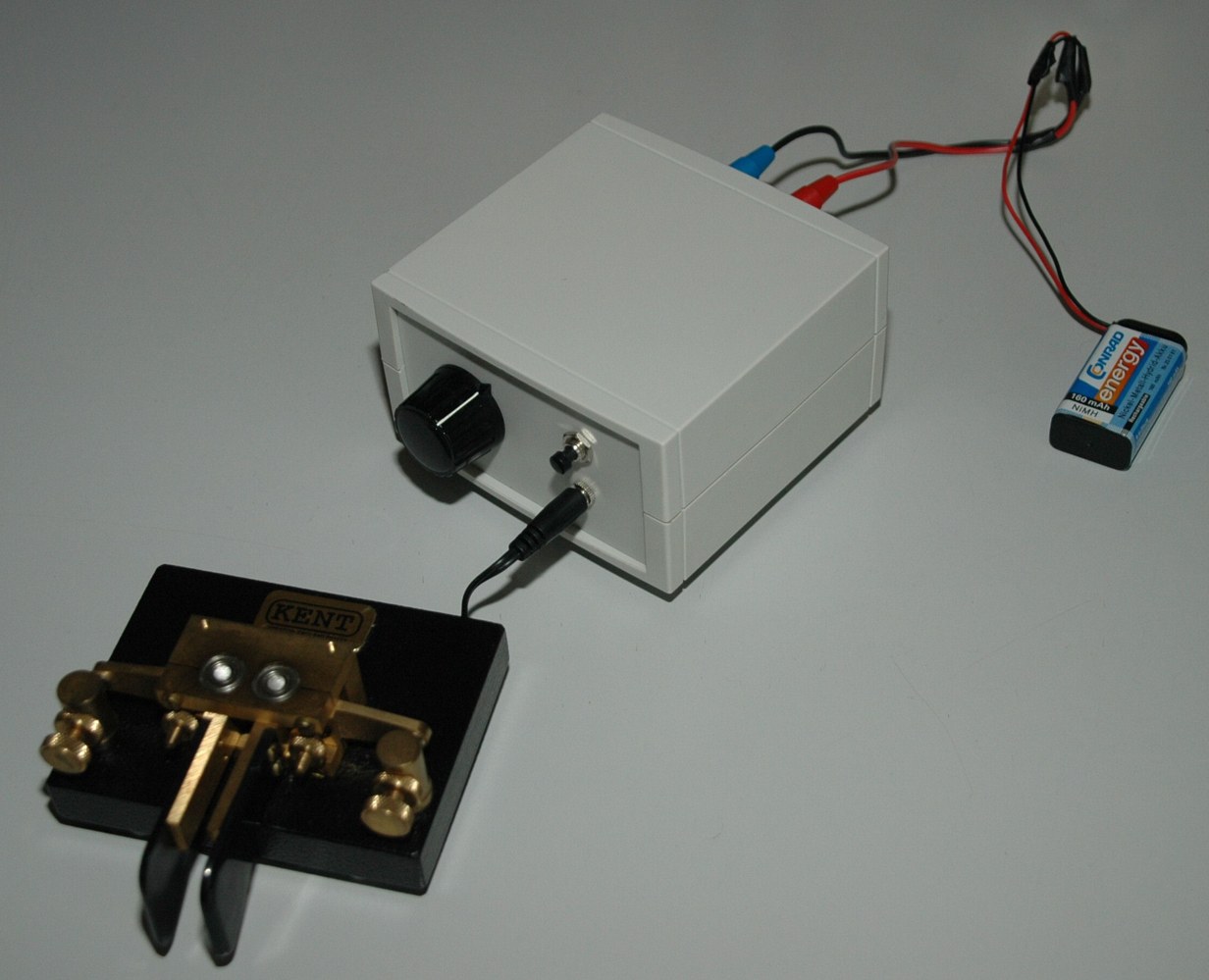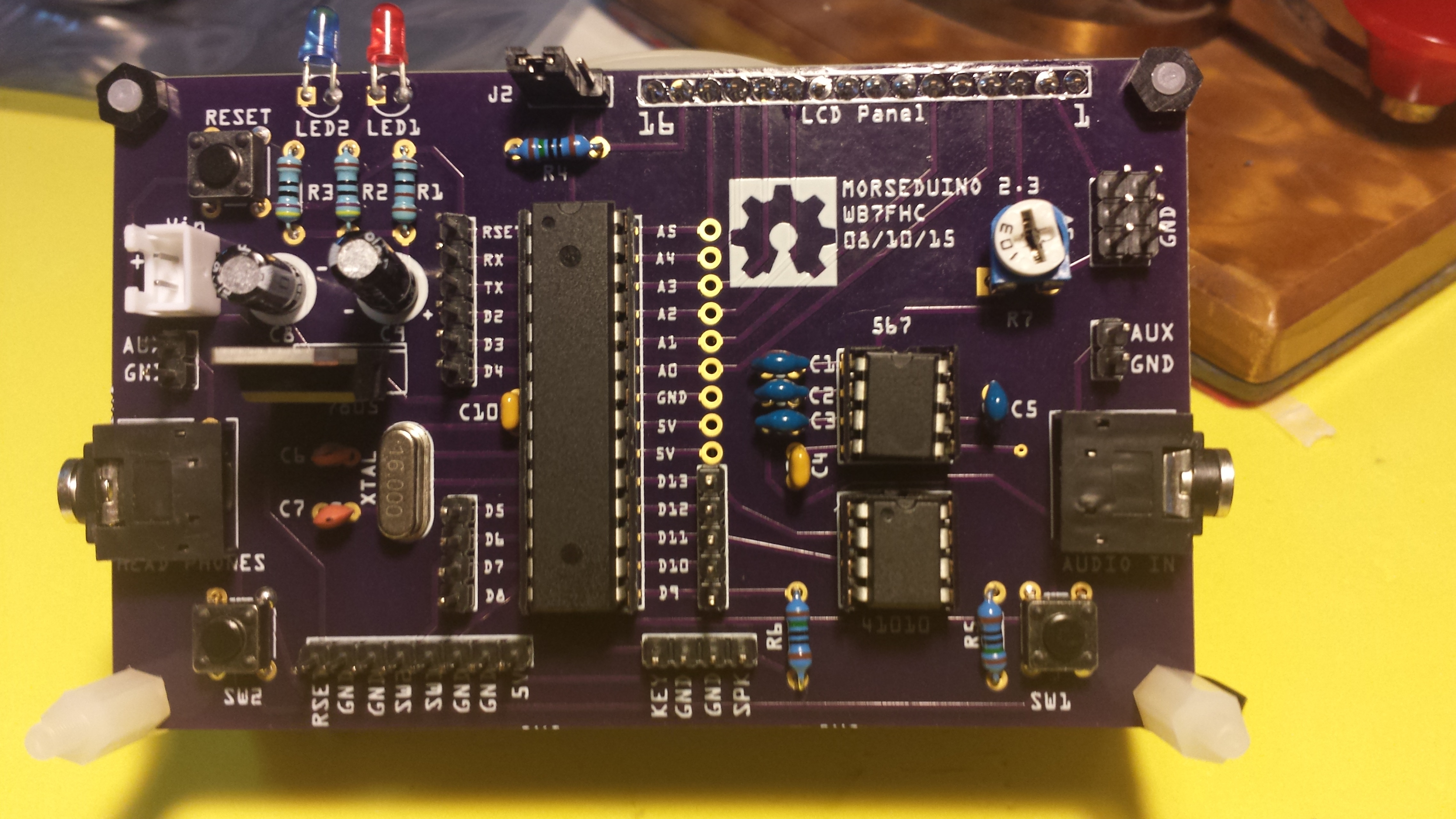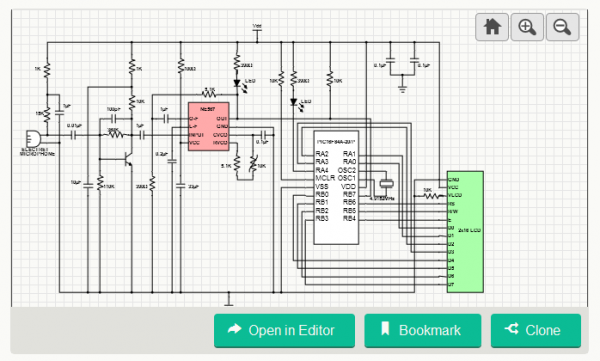
- #Cw keyer decoder serial#
- #Cw keyer decoder pro#
- #Cw keyer decoder software#
- #Cw keyer decoder code#
- #Cw keyer decoder Pc#
With a github account (free to setup) I believe anyone can add a note to the wiki for things like this.

Perhaps you can persaude the SDR Console author to add MIDI keying (and sidetone in the PC) if it doesn't already have it?Įnjoy your experimenting and perhaps report back with your findings.

#Cw keyer decoder pro#
You will need to buy a suitable microcontroller board (I used an Arduino Leonardo, Pro Micro Arduino is much cheaper but is essentially the same), then upload this firmware. This is, in my opinion, the best way forwards for CW with SDR. I have tested this and at 30 wpm I can't "feel" the latency.
#Cw keyer decoder Pc#
Spark SDR has MIDI based keying, sidetone is produced in the PC and doesn't have to "make the trip" via the radio and back. At speeds higher than about 12-15 wpm, I find this affects me. But this would suffer latency because you are hearing the latency from key down -> packet sent to HL2 - TX -> Rx packet sent to HL2. I think you would have to use duplex mode in the software. I don't know how you hear the sidetone for this.
#Cw keyer decoder serial#
I've not used this feature, but with PowerSDR, you can key the HL2 from a PC serial port. I found this affected my ability to send above about 15 wpm. Quisk and SparkSDR let you monitor you transmitted signal, but there is latency.
#Cw keyer decoder software#
I believe some people are using Windows software external to SDR software to perhaps achieve what you might want? I haven't tried this, but it might give you some ideas to experiment with? I think it would be easier to make a new 3.5 mm cable than build a new keyer! With tweezers and listening to the relay, you should be able to figure out tip and ring behaviour on CN4. If you have a 1 second delay before a relay click, you have an answer to your question. Short the ring to ground (I always have a pair of tweezers on my bench for such things!). In SparkSDR, PowerSDR (perhaps Quisk too) you can set the hardware managed CW hang time. You should be able to test the tip/ring behaviour of CN4. I have used SparkSDR and Quisk for CW operation with a keyer (and straight key) plugged into the CN4 jack on my HL2. I've never used SDR Console so can't comment on any of your questions about that. I'd like a method that works remotely and therefore can > front panel connector is the recommended CW method. > Currently a straight key or keyer connected to the tip of the > On Tuesday, Februat 11:22:20 PM UTC-6, Steve Haynal wrote: > paddles and provides an internal speaker for sidetone. > I was using saved messages from a keyboard, but it also supports using

> to make sure that my amplifier was ready for input. > PTT hang time when the keying is completed.

The WinKeyer has a configurable PTT delay and > I hooked one up today to my HL2 to try and work TI9A.
#Cw keyer decoder code#
combined with FLdigi, this experimental RazPi setup, makes for a complete morse code CW station with ST KEY, IAMBIC PADDLES and CW KEYBOARD.all ready to send cw audio tones to the sound card audio output of the pi.> Another very good keyer is the K1EL WinKeyer NOTE: using USB MIDI input for this RaZpi's iambic keyer & st key apps.there is no noticeable delay from striking the morse code instrument's paddle/key handles until a tone is heard. Jack is using the native analogue RaZpi sound card 48k sample rate "./midicw" will bring it up once you migrate to the BIN folder.īoth the tones of the iambic keyer and the st key have raised cosine edges defaulting to 5 millisecond rise and fall times.įLdigi already has JACK SUPPORT, so you just choose JACK for its audio input and output. to bring up the STRAIGHT KEY app called midicw, located in the BIN folder inside the main RECRI "KEYER" folder. In Gladish, create a new studio and start it, JACK will setup with default settings previously inscribed, and then you need to create a new room, call it KEYER, then load an imabic keyer ladish project from one of the iambic keyers inside the ladish-project folder of the main recri keyer folder(after configure/make etc) GLADISH is used in this video example.to bring up an iambic keyer ladish-project folder/XMLfile. The iambic keyer software is setup to receive midi input and will send dits when it receives midi note 0, and it will send dahs when it receives midi note 1 from the midi device(a teensy midi board is shown in the picture below FLdigi - made by AD5DZ ) Many types of midi devices can be made(bought).u just have to "tell" the HARDWARE MIDI board to send midi notes, 1 and 0 when certain i/o pins are connected together.etc same for the st key.(only using midi note 60) NOTE: midicw (executable in the RECRI KEYER/ BIN / FOLDER) will send a ST KEY tone when it receives midi note 60 from the midi device. Once built and compiled, the Recri Keyer software will allow both STRAIGHT KEY and IAMBIC KEYER at the same time via a USB MIDI DEVICE(s) that hooks up directly to your iambic paddle contacts and Straight key contacts. IAMBIC and STRAIGHT KEY from: - cw keyboard is from FLdigi :


 0 kommentar(er)
0 kommentar(er)
